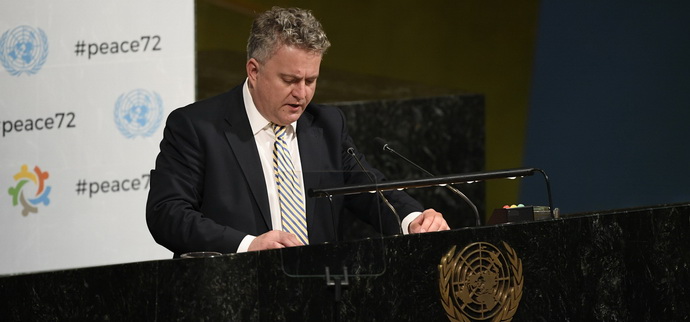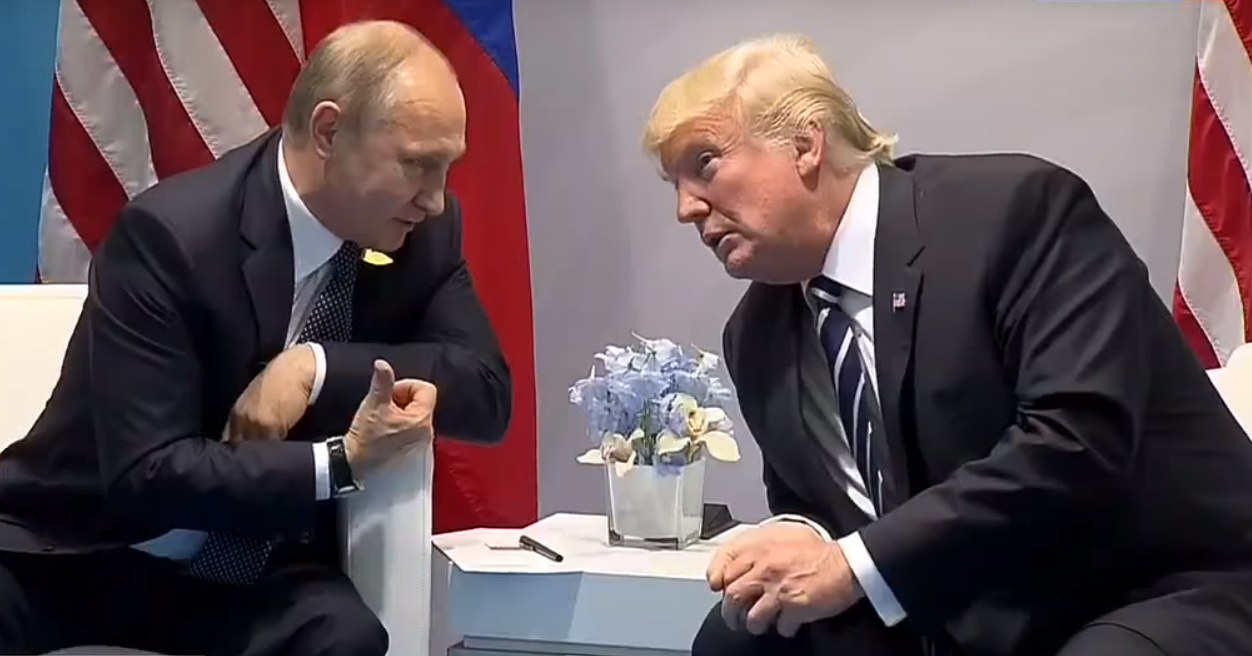The Third Committee of the United Nations General Assembly has recently approved a newly revised draft resolution titled “Situation of human rights in the Autonomous Republic of Crimea and the city of Sevastopol, Ukraine.” The document was backed by 67 UN member states, 26 voted against it, 82 abstained. The ones that voted against are: Armenia, Belarus, Bolivia, Burundi, Cambodia, China, Cuba, North Korea, Eritrea, India, Iran, Kazakhstan, Kyrgyzstan, Myanmar, Nicaragua, Russia, Serbia, South Africa, South Sudan, Sudan, Syria, Tajikistan, Uganda, Uzbekistan, Venezuela, and Zimbabwe.
The next resolution (71/205), approved on 19 December 2016, recognized Russia as an occupying power, and among other things called to end Russian repressions against Crimean Tatars, release illegally imprisoned Ukrainians, reverse the ban of the Mejlis, the Crimean Tatar representative organ, and to stop using the Russian justice system on the peninsula. 70 countries voted in support of this document, 26 voted against, and 77 abstained.
The one adopted in 2018, 72/190, was similar to the previous one but took the human rights agenda a step further, invoking international humanitarian law
, i.e. recognizing not only the ongoing occupation, but an international armed conflict. Here 70 countries voted in favor, 26 voted against, and 76 abstained.
Read also: New UN resolution on Crimea confirms Russia is an occupying power, brings 10 important changes for Ukraine (2017)
Its final adoption is expected to take place in December this year. Here is how it stands out from the previous ones, according to Serhiy Kyslytsia, Deputy Minister of Foreign Affairs, writing for European Pravda.
1. It mentions the names of three political prisoners of the Kremlin
This year, the resolution's main focus in on the political prisoners of the Kremlin - around 70 Ukrainians illegally imprisoned by Russia on political motives. Most of them were detained in Crimea. The project resolution mentions that starting from 2014, the Russian authorities use torture to extort false confessions in politically motivated cases, and also illegally detains and arrests Ukrainian citizens.
The document names three of them: Oleg Sentsov, Volodymyr Balukh, and Emir-Usein Kuku, who had declared hunger strikes in protest of Russian arbitrariness.
Kyslytsia writes that, despite only three of the prisoners being named, their mention in an official UN document is an extremely important element for the struggle to release all illegally imprisoned Ukrainians.
"Personally, I recall only two incidents in the history of the United Nations when the General Assembly's resolutions condemned the persecution of specific individuals - the leader of the struggle against apartheid Nelson Mandela and the opposition leader of the Moon, Aung San Suu Kyi. The names of these people entered world history, and the whole world demanded their release was demanded," wrote Kyslytsia.
According to the diplomat, the names of Sentsov, Baluk, and Kuku in the resolution are a "security certificate of sorts" for them and dozens of other illegally imprisoned Ukrainians. "Hope for their safe return to their homeland remains while their names are mentioned on international platforms,
" Kyslytsia stressed.
2. It stresses the rights of the detained Ukrainians
According to Kyslytsia, the second feature of the resolution concerns all Ukrainians imprisoned on territories controlled by Russia.
The document calls on Russia to give international experts from the European Committee for the Prevention of Torture and the International Red Cross Committee, as well as Ukrainian consuls, information about the health and conditions of imprisonment of the detained Ukrainians and allow to visit them. It also allows Ukraine's Ombudsman Liudmyla Denisova to visit the prisoners. In 2018, Denisova undertook several attempts to visit Oleg Sentsov and others imprisoned by Russia, only to be turned away at the prison gates despite existing agreements.
As well, the document calls upon Russia to guarantee that the rights of prisoners according to norms of international law are not violated, including those who announced hunger strikes, as well as to respect the Minimal standard UN rules for treatment of prisoners (the so-called "Nelson Mandela Rules").
This is important, knowing Russia's track record of treatment of prisoners.
3. It reinforces the fundamental rights of Crimeans
Trending Now
The resolution demands Russia stop conscripting Crimeans to its military operations and stop deporting Ukrainian citizens from the Crimean peninsula over refusing Russian citizenship.
Separately, it stresses the need to guarantee the right to expression and peaceful assembly on territories controlled by Russia, including during single pickets, and underscores that Russia must stop discriminating and punishing those who speak out against Russian occupation.
4. It calls upon international organizations to refer to Crimea as occupied territory
As the previous resolutions, this one reiterates that Russia's annexation of Crimea was illegal, and that this is no news for the UN.
But this year's resolution goes further - it requests international organizations and specialized UN bodies mark the Ukrainian peninsula in their official documents only as "The Autonomous Republic of Crimea and Sevastopol (Ukraine), which are temporarily occupied by the Russian Federation."
This new element in the UN's decision is called to bring international instruments in line with Ukrainian legislature on the status of Crimea. It also serves as a guideline for other countries, Kyslytsia writes - Crimea is no territory with a "disputed status"; it clearly belongs to Ukraine.
"That's why the next time that school textbooks or atlases of 'country X' mark Crimea as "not Ukrainian," you can rightfully cite the provisions of the resolution. Of course, after it's adopted by the UN General Assembly," he stressed.
5. It stresses the role of the UN and its Secretary General
The leader of the UN is requested to provide a report on the implementation of this resolution for the next, 74th session of the General Assembly, and develop recommendations for further actions.
Why is this all important?
The resolution will not bring to the deoccupation of Crimea "here and now," warns Kyslytsia. But it's nevertheless important: Ukraine has chosen a political-diplomatic way of regulating the conflict with Russia, and this year's resolution is one of the instruments in the process. It will allow the UN Human Rights Monitoring Mission more opportunities and its provisions will be used by Ukraine in its international lawsuits against Russia.
"The General Assembly and UN are not a field for momentary triumphs. This is a long game, and each document prepares the ground for the next one. If there was no resolution in support of Ukraine's territorial integrity in 2014, there wouldn't have been the 2016-2017 resolutions on human rights in occupied Crimea," Kyslytsia wrote, stressing that these blows are not "mortal" ones, but each one carries consequences which "will inevitably become fatal later on."




